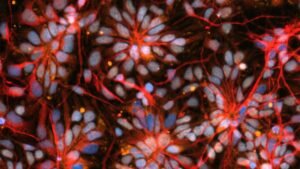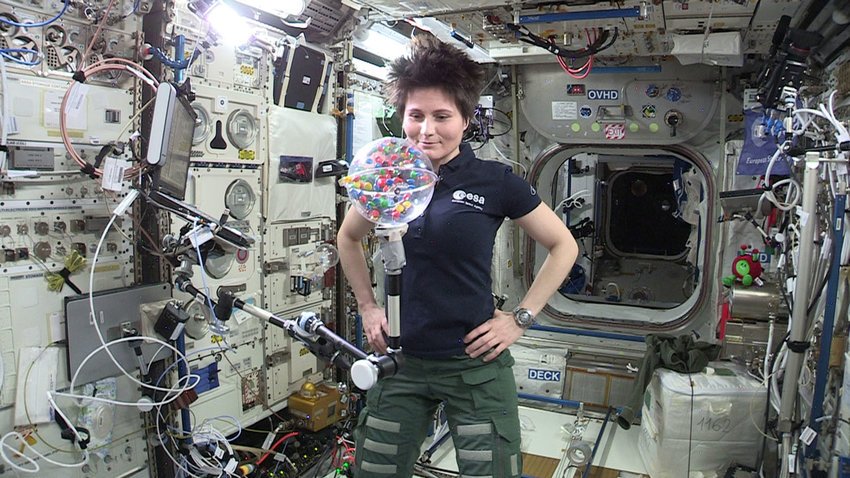Exploring Neurodegenerative Diseases in Microgravity: Neurodegenerative diseases represent a growing concern globally, significantly affecting millions of individuals and families. Among these disorders, Alzheimer’s disease and Parkinson’s disease are particularly prominent due to their high prevalence and debilitating effects. Alzheimer’s disease, characterized by cognitive decline and memory loss, currently impacts over six million people in the United States alone. Meanwhile, Parkinson’s disease, which results in motor function disturbances and progressive neurological decline, affects approximately one million Americans, with numbers expected to rise as the population ages. Meanwhile the financial burden of these diseases on healthcare systems is substantial, alongside the profound emotional and psychological toll on patients and caregivers.
Research into the mechanisms underlying neurodegenerative diseases has historically been conducted in terrestrial environments, but recent advancements suggest that studying these conditions in microgravity may yield novel insights. Microgravity environments, such as those found aboard the International Space Station (ISS), create unique physiological conditions that can alter biological processes. These changed conditions enable researchers to explore how reduced gravitational forces may affect cellular and molecular pathways associated with neurodegeneration.
Studying the Impact of Microgravity on Neurodegenerative Diseases
The groundbreaking ‘ring-sheared drop’ experiment represents an innovative approach to studying neurodegenerative diseases in this unique setting. By analyzing the behavior of protein aggregates and their interaction with cellular structures in microgravity, scientists hope to uncover mechanisms that contribute to the progression of disorders like Alzheimer’s and Parkinson’s. Understanding how these conditions manifest and evolve in a microgravity environment could lead to developing novel therapeutic strategies and a deeper understanding of neurodegeneration’s fundamental processes. Through such pioneering research, the goal is to make substantial progress toward mitigating the impact of these diseases on individuals and society as a whole.
Understanding Amyloid Fibrils and Their Role in Alzheimer’s Disease
Amyloid fibrils are misfolded protein aggregates that play a pivotal role in the pathogenesis of Alzheimer’s disease, a neurodegenerative disorder characterized by cognitive decline and memory impairment. These fibrils comprise beta-amyloid peptides produced through the cleavage of the amyloid precursor protein (APP). Under normal physiological conditions, these peptides can aggregate to form oligomers and, if not cleared adequately, progress to form mature amyloid fibrils. The accumulation of these fibrils in the brain is a hallmark of Alzheimer’s disease and is believed to be toxic to neurons, contributing to neuroinflammation and synaptic dysfunction.
Various factors, including peptide conformation and environmental conditions, influence the formation of amyloid fibrils. The unique structural organization of amyloid fibrils allows them to adopt a stable, sheet-like configuration, making them resistant to proteolytic degradation. This stability is problematic as it leads to persistent deposition in the brain, which disrupts cell function and activates the immune response. Under normal gravity conditions, the interactions between these fibrils and other cellular elements can be complex, affecting their propensity to aggregate and ultimately influencing disease progression.
Recent studies have suggested that microgravity may alter the behavior of amyloid fibrils, presenting a novel area of research for understanding Alzheimer’s disease. The physical forces that typically govern molecular interactions are significantly diminished in a microgravity environment. This altered environment could affect fibril formation and stability kinetics, leading to unique aggregation patterns that may be less observed under normal gravity. Understanding how these changes occur in microgravity could provide new insights into the fundamental processes of amyloid pathology and inform future therapeutic strategies aimed at mitigating the effects of amyloid accumulation in Alzheimer’s disease.
Exploring Neurodegenerative Diseases in Microgravity.
The Ring-Sheared Drop Experiment: Methodology and Goals

The Ring-Sheared Drop Experiment (RSDE) is a groundbreaking research initiative investigating the behavior of amyloid fibrils associated with neurodegenerative diseases in a microgravity environment. This experiment aims to primarily isolate and characterize the properties of these fibrils implicated in diseases such as Alzheimer’s and Parkinson’s. The methodology employed in this experiment involves leveraging a unique apparatus known as the Microgravity Science Glovebox (MSG), which offers a controlled environment to facilitate these investigations. The MSG provides a safe space for researchers to manipulate liquids and study their behaviors without the interference of Earth’s gravity.
In the RSDE, researchers utilize a specific technique where a droplet of solution containing amyloid precursors is subjected to a shoring action created through ring-sheared forces. This motion causes the droplet to display behaviors that mimic the conditions of fibril formation and aggregation. By observing these behaviors in microgravity, scientists can gain insights into structural changes and the dynamics involved in fibril development, which may differ significantly from those observed under normal gravitational conditions. The exclusion of gravity allows for more precise measurements and can reveal information otherwise obscured in terrestrial experiments.
The overarching goal of the RSDE is to enhance our knowledge of amyloid fibril formation mechanisms and identify potential therapeutic targets for treating neurodegenerative diseases. By answering questions about how fibrils form, grow, and interact at the molecular level in microgravity, researchers aim to establish a clearer understanding of their role in disease progression. This knowledge is crucial, as it could pave the way for developing effective treatments and preventative strategies against neurodegenerative disorders, potentially improving patient outcomes in the long term.
Implications for Future Research and Global Health: Studying the Impact of Microgravity on Neurodegenerative Diseases
The Ring-Sheared Drop experiment as a matter of facts provides critical insights into the behavior of amyloid fibrils under microgravity, which has profound implications for our understanding and treatment of neurodegenerative diseases such as Alzheimer’s and Parkinson’s. As a matter of facts these diseases continue to present significant global health challenges, undoubtfully the findings from this innovative research could pave the way for breakthrough therapies. By elucidating how these harmful proteins aggregate in a low-gravity environment, researchers may identify novel strategies for intervention that could be adapted for terrestrial applications.

One of the significant implications of this study is the potential for improved treatment modalities. The traditional approach to managing neurodegenerative diseases often lacks precision, resulting in limited efficacy and substantial side effects. However, insights derived from studying amyloid fibrils in microgravity may guide the development of targeted therapies that specifically inhibit the formation of toxic aggregates. Moreover, understanding the biophysical properties of these proteins under altered gravitational conditions may inspire biomimetic strategies that enhance the design of drug delivery systems, ultimately leading to more effective therapeutics.
Exploring Neurodegenerative Diseases in Microgravity:
The Ring-Sheared Drop experiment also exemplifies the necessity for collaborative efforts in tackling global health issues. By integrating expertise from multiple scientific disciplines, including engineering, microbiology, and neurology, this research reflects a multidimensional approach essential for addressing complex health concerns. Moreover It highlights the importance of continued investment in innovative medical technologies and collaborative research initiatives to enhance our capability to combat neurodegenerative diseases. As research progresses, the lessons learned from the microgravity environment can guide future studies, potentially leading to impactful advancements in our understanding of these debilitating conditions.



